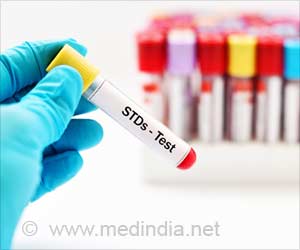Sex diseases continue to rise in the US, and chlamydia and gonorrhea are the two most common diseases, latest data reveal.
The 1,030,911 cases of chlamydia in 2006 are the highest ever recorded for any nationally reported disease in any year, federal health officials said in releasing their annual report on sexually transmitted diseases. They said that because of underreporting, a more accurate estimate is 2.8 million new chlamydia cases annually.About 19 million new cases of all kinds of sexually transmitted diseases occur in this country each year, but only the three are nationally reported. Genital herpes, papillomavirus and trichomonas infections account for the vast majority of cases, but doctors are not required to report them nationally.
Different reasons account for the rise of each of the three reportable and curable diseases, and for each a different approach is needed to reduce its incidence, Centers for Disease Control and Prevention, told reporters by telephone.
The three reported sexually transmitted diseases affect African-Americans disproportionately. The black to white ratios are gonorrhea 18 to 1, syphilis 6 to 1 and chlamydia 8 to 1, Dr. Douglas said in an interview. The reasons for the disparities are not clear. Lack of access to health care may be one problem.
“Chlamydia is now the most common S.T.D. ever reported,” Dr. John M. Douglas Jr., head of the division of sexually transmitted diseases at the Centers for Disease Control and Prevention, said.
The chlamydia microbe can causepelvic inflammatory disease and resulting abdominal pain, ectopic pregnancy and infertility in women.
Chlamydia’s rise in incidence is due mainly to urging by the centers for annual testing of sexually active women under age 26, Douglas feels. Current tests are more sensitive in detecting chlamydia than those used a few years ago. Most cases were among women who had no symptoms but could transmit the microbe.
Chlamydia screening has led to detection of the microbe among more men as their female partners advise them to get tested and treated to avoid re-infections. Infected individuals are advised to get re-tested about three months after treatment to make sure they are cured.
The centers are also encouraging doctors to give antibiotics and educational material to patients to give to their sexual partners who are reluctant to seek care. One aim of the practice, called expedited partners therapy, is to reduce re-infections. The practice is legal in 11 states and ambiguous or illegal in the 39 others.
From 1975 through 1997 the reported rate of gonorrhea dropped 74 percent, then plateaued, only to rise the last two years to 358,366 cases in 2006. The centers estimate that at least twice that number actually occurred.
Much of the rise seems the result of an increasing tendency to couple gonorrhea and chlamydia testing of urine samples.
African-Americans account for 69 percent of all gonorrhea in this country. “The biggest increase in gonorrhea regionally has been in the South, and we do not have a ready explanation for that,” Douglas said.
Even in the days before penicillin became available in World War II to cure syphilis, the number of reported syphilis cases peaked at 575,000, and that total included individuals who never could be treated and developed the late stages of the disease that cause brain and heart damage.
Syphilis cases dropped to their lowest ever total in 2000 soon after health officials had announced a national syphilis elimination program.
But cases have risen each year since then to 9,756 cases in 2006. Most cases have involved gay men, who account for about 65 percent of cases, and to a lesser extent women. Also, a small number of cases have occurred among newborns.
The nation is clearly paying for its permissiveness.
Source-Medindia
GPL/P







